New phase therapeutic pursuits for targeted drug delivery in glioblastoma multiforme
Glioblastoma multiforme (GBM) is known as the most aggressive and prevalent brain tumor with a high mortality rate. It is reported in people who are as young as 10 years old to as old as over 70 years old, exhibiting inter and int
[...] Read more.
Glioblastoma multiforme (GBM) is known as the most aggressive and prevalent brain tumor with a high mortality rate. It is reported in people who are as young as 10 years old to as old as over 70 years old, exhibiting inter and intra tumor heterogeneity. There are several genomic and proteomic investigations that have been performed to find the unexplored potential targets of the drug against GBM. Therefore, certain effective targets have been taken to further validate the studies embarking on the robustness in the field of medicinal chemistry followed by testing in clinical trials. Also, The Cancer Genome Atlas (TCGA) project has identified certain overexpressed targets involved in the pathogenesis of GBM in three major pathways, i.e., tumor protein 53 (p53), retinoblastoma (RB), and receptor tyrosine kinase (RTK)/rat sarcoma virus (Ras)/phosphoinositide 3-kinase (PI3K) pathways. This review focuses on the compilation of recent developments in the fight against GBM thus, directing future research into the elucidation of pathogenesis and potential cure for GBM. Also, it highlights the potential biomarkers that have undergone extensive research and have promising prognostic and predictive values. Additionally, this manuscript analyses the advent of gene therapy and immunotherapy, unlocking the way to consider treatment approaches other than, or in addition to, conventional chemo-radiation therapies. This review study encompasses all the relevant research studies associated with the pathophysiology, occurrence, diagnostic tools, and therapeutic intervention for GBM. It highlights the evolution of various therapeutic perspectives against GBM from the most conventional form of radiotherapy to the recent advancement of gene/cell/immune therapy. Further, the review focuses on various targeted therapies for GBM including chemotherapy sensitization, radiotherapy, nanoparticles based, immunotherapy, cell therapy, and gene therapy which would offer a comprehensive account for exploring several facets related to GBM prognostics.
Manisha Singh ... Rachana
Glioblastoma multiforme (GBM) is known as the most aggressive and prevalent brain tumor with a high mortality rate. It is reported in people who are as young as 10 years old to as old as over 70 years old, exhibiting inter and intra tumor heterogeneity. There are several genomic and proteomic investigations that have been performed to find the unexplored potential targets of the drug against GBM. Therefore, certain effective targets have been taken to further validate the studies embarking on the robustness in the field of medicinal chemistry followed by testing in clinical trials. Also, The Cancer Genome Atlas (TCGA) project has identified certain overexpressed targets involved in the pathogenesis of GBM in three major pathways, i.e., tumor protein 53 (p53), retinoblastoma (RB), and receptor tyrosine kinase (RTK)/rat sarcoma virus (Ras)/phosphoinositide 3-kinase (PI3K) pathways. This review focuses on the compilation of recent developments in the fight against GBM thus, directing future research into the elucidation of pathogenesis and potential cure for GBM. Also, it highlights the potential biomarkers that have undergone extensive research and have promising prognostic and predictive values. Additionally, this manuscript analyses the advent of gene therapy and immunotherapy, unlocking the way to consider treatment approaches other than, or in addition to, conventional chemo-radiation therapies. This review study encompasses all the relevant research studies associated with the pathophysiology, occurrence, diagnostic tools, and therapeutic intervention for GBM. It highlights the evolution of various therapeutic perspectives against GBM from the most conventional form of radiotherapy to the recent advancement of gene/cell/immune therapy. Further, the review focuses on various targeted therapies for GBM including chemotherapy sensitization, radiotherapy, nanoparticles based, immunotherapy, cell therapy, and gene therapy which would offer a comprehensive account for exploring several facets related to GBM prognostics.
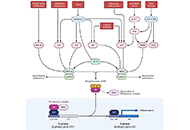 New phase therapeutic pursuits for targeted drug delivery in glioblastoma multiformeOpen AccessReviewGlioblastoma multiforme (GBM) is known as the most aggressive and prevalent brain tumor with a high mortality rate. It is reported in people who are as young as 10 years old to as old as over 70 years old, exhibiting inter and int [...] Read more.Manisha Singh ... RachanaPublished: December 30, 2022 Explor Target Antitumor Ther. 2022;3:866–888
New phase therapeutic pursuits for targeted drug delivery in glioblastoma multiformeOpen AccessReviewGlioblastoma multiforme (GBM) is known as the most aggressive and prevalent brain tumor with a high mortality rate. It is reported in people who are as young as 10 years old to as old as over 70 years old, exhibiting inter and int [...] Read more.Manisha Singh ... RachanaPublished: December 30, 2022 Explor Target Antitumor Ther. 2022;3:866–888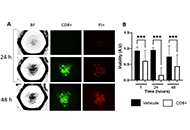 Evaluating immune response in vitro in a relevant microenvironment: a high-throughput microfluidic model for clinical screeningOpen AccessOriginal ArticleAim: Functional screening of new pharmaceutical compounds requires clinically relevant models to monitor essential cellular and immune responses during cancer progression, with or without treatment. Beyond survival, the emergence [...] Read more.Flora Doffe ... Pierre SavagnerPublished: December 29, 2022 Explor Target Antitumor Ther. 2022;3:853–865
Evaluating immune response in vitro in a relevant microenvironment: a high-throughput microfluidic model for clinical screeningOpen AccessOriginal ArticleAim: Functional screening of new pharmaceutical compounds requires clinically relevant models to monitor essential cellular and immune responses during cancer progression, with or without treatment. Beyond survival, the emergence [...] Read more.Flora Doffe ... Pierre SavagnerPublished: December 29, 2022 Explor Target Antitumor Ther. 2022;3:853–865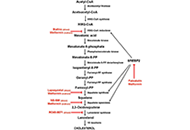 De novo cholesterol biosynthesis: an additional therapeutic target for the treatment of postmenopausal breast cancer with excessive adipose tissueOpen AccessCommentaryThe onset and development of breast cancer in postmenopausal women are associated with closely related individual-dependent factors, including weight gain and high levels of circulating androgens. Adipose tissue is the most periph [...] Read more.Danila CoradiniPublished: December 28, 2022 Explor Target Antitumor Ther. 2022;3:841–852
De novo cholesterol biosynthesis: an additional therapeutic target for the treatment of postmenopausal breast cancer with excessive adipose tissueOpen AccessCommentaryThe onset and development of breast cancer in postmenopausal women are associated with closely related individual-dependent factors, including weight gain and high levels of circulating androgens. Adipose tissue is the most periph [...] Read more.Danila CoradiniPublished: December 28, 2022 Explor Target Antitumor Ther. 2022;3:841–852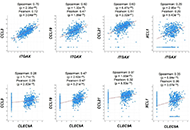 Dendritic cell-targeting chemokines inhibit colorectal cancer progressionOpen AccessOriginal ArticleAim: Recent progress in cancer immunotherapy has shown its promise and prompted researchers to develop novel therapeutic strategies. Dendritic cells (DCs) are professional antigen-presenting cell [...] Read more.Pengkun Yuan ... Bin MaPublished: December 27, 2022 Explor Target Antitumor Ther. 2022;3:828–840
Dendritic cell-targeting chemokines inhibit colorectal cancer progressionOpen AccessOriginal ArticleAim: Recent progress in cancer immunotherapy has shown its promise and prompted researchers to develop novel therapeutic strategies. Dendritic cells (DCs) are professional antigen-presenting cell [...] Read more.Pengkun Yuan ... Bin MaPublished: December 27, 2022 Explor Target Antitumor Ther. 2022;3:828–840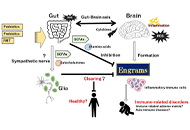 Encouraging probiotics for the prevention and treatment of immune-related adverse events in novel immunotherapies against malignant gliomaOpen AccessPerspectiveAmong the malignant tumors in the central nervous system (CNS), glioma is the most challenging tumor to the public society, which accounts for the majority of intracranial malignant tumors with impa [...] Read more.Sayuri Yoshikawa ... Satoru MatsudaPublished: December 27, 2022 Explor Target Antitumor Ther. 2022;3:817–827
Encouraging probiotics for the prevention and treatment of immune-related adverse events in novel immunotherapies against malignant gliomaOpen AccessPerspectiveAmong the malignant tumors in the central nervous system (CNS), glioma is the most challenging tumor to the public society, which accounts for the majority of intracranial malignant tumors with impa [...] Read more.Sayuri Yoshikawa ... Satoru MatsudaPublished: December 27, 2022 Explor Target Antitumor Ther. 2022;3:817–827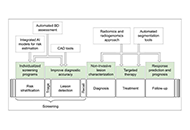 Artificial intelligence in breast cancer imaging: risk stratification, lesion detection and classification, treatment planning and prognosis—a narrative reviewOpen AccessReviewThe advent of artificial intelligence (AI) represents a real game changer in today’s landscape of breast cancer imaging. Several innovative AI-based tools have been developed and validated in recent years that promise to acceler [...] Read more.Maurizio Cè ... Michaela CellinaPublished: December 27, 2022 Explor Target Antitumor Ther. 2022;3:795–816
Artificial intelligence in breast cancer imaging: risk stratification, lesion detection and classification, treatment planning and prognosis—a narrative reviewOpen AccessReviewThe advent of artificial intelligence (AI) represents a real game changer in today’s landscape of breast cancer imaging. Several innovative AI-based tools have been developed and validated in recent years that promise to acceler [...] Read more.Maurizio Cè ... Michaela CellinaPublished: December 27, 2022 Explor Target Antitumor Ther. 2022;3:795–816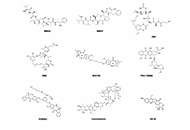 Antibody-drug conjugates for lymphoma patients: preclinical and clinical evidencesOpen AccessReviewAntibody-drug conjugates (ADCs) are a recent, revolutionary approach for malignancies treatment, designed to provide superior efficacy and specific targeting of tumor cells, compared to systemic cyt [...] Read more.Marilia Barreca ... Francesco BertoniPublished: December 26, 2022 Explor Target Antitumor Ther. 2022;3:763–794
Antibody-drug conjugates for lymphoma patients: preclinical and clinical evidencesOpen AccessReviewAntibody-drug conjugates (ADCs) are a recent, revolutionary approach for malignancies treatment, designed to provide superior efficacy and specific targeting of tumor cells, compared to systemic cyt [...] Read more.Marilia Barreca ... Francesco BertoniPublished: December 26, 2022 Explor Target Antitumor Ther. 2022;3:763–794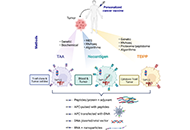 Mutant and non-mutant neoantigen-based cancer vaccines: recent advances and future promisesOpen AccessReviewMajor advances in cancer treatment have emerged with the introduction of immunotherapies using blocking antibodies that target T-cell inhibitory receptors, such as programmed death-1 (PD-1) and cyto [...] Read more.Mohamad Omar Ashi ... Stéphanie CorgnacPublished: December 22, 2022 Explor Target Antitumor Ther. 2022;3:746–762
Mutant and non-mutant neoantigen-based cancer vaccines: recent advances and future promisesOpen AccessReviewMajor advances in cancer treatment have emerged with the introduction of immunotherapies using blocking antibodies that target T-cell inhibitory receptors, such as programmed death-1 (PD-1) and cyto [...] Read more.Mohamad Omar Ashi ... Stéphanie CorgnacPublished: December 22, 2022 Explor Target Antitumor Ther. 2022;3:746–762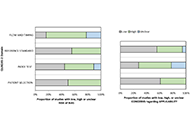 Diffusion-weighted imaging and apparent diffusion coefficient mapping of head and neck lymph node metastasis: a systematic reviewOpen AccessSystematic ReviewAim: Head and neck squamous cell cancer (HNSCC) is the ninth most common tumor worldwide. Neck lymph node (LN) status is the major indicator of prognosis in all head and neck cancers, and the early detection of LN involvement is c [...] Read more.Maria Paola Belfiore ... Salvatore CappabiancaPublished: December 13, 2022 Explor Target Antitumor Ther. 2022;3:734–745
Diffusion-weighted imaging and apparent diffusion coefficient mapping of head and neck lymph node metastasis: a systematic reviewOpen AccessSystematic ReviewAim: Head and neck squamous cell cancer (HNSCC) is the ninth most common tumor worldwide. Neck lymph node (LN) status is the major indicator of prognosis in all head and neck cancers, and the early detection of LN involvement is c [...] Read more.Maria Paola Belfiore ... Salvatore CappabiancaPublished: December 13, 2022 Explor Target Antitumor Ther. 2022;3:734–745